
Original Link: https://www.anandtech.com/show/1445
Buyer's Guide: Mid-Range System - August 2004
by Evan Lieb on August 23, 2004 12:05 AM EST- Posted in
- Guides
Index
At the moment, we are experimenting with our Buyer's Guides to see if we can improve on meeting the needs of a wider range of users, both in terms of the components that we recommend and the prices of those components. We will continue to produce an Entry Level, Mid-Range, High End, and Overclocking systems guides. In addition, we will be adding SFF guides and perhaps some type of mobile-related guide to our arsenal. For now, though, we will keep with our current format until we get a feel for what our readers want. So, if you want to let us know what you'd like to see in future guides in terms of component picks and price points, write your thoughts in our comments section, located at the bottom of the page.We will still continue to evaluate products like we have in all our other guides. For every component that goes into a computer, we offer our recommendation for a piece of hardware as well as our alternative on that type of hardware. We've added alternative hardware picks to our guides because it allows AnandTech to recommend a wider variety of hardware (especially for those willing to spend a little more than what we budget for a particular system). To be clear, alternative picks tell you just that - your alternatives, which in some cases will be better suited for your needs, and in other cases, will not be. But at the same time, we can still be assertive enough with a first place recommendation so that new buyers aren't indecisive or confused about what to purchase. Most of the prices listed for the hardware that we recommend can be found in our very own RealTime Pricing Engine. Any prices not found in our engine can be found on pricewatch.com. We list pertinent parts of our RealTime pricing engine at the bottom of every page of our Buyer's Guides so that you can choose the lowest prices from a large variety of vendors.
Mid-Range
While entry level (budget) systems should mainly be constructed with reliability and price in mind, with performance a fairly distant third consideration, mid-range systems have a slightly different order of priority. Reliability is still #1 priority, but performance and price are in a sort of a tie. Performance isn't of the utmost importance in a mid-range system, but it's also not ignored nearly as much as a plain, old entry level system is. Similarly, price isn't of utmost importance either, but buyer's building a mid-range system must be mindful of the price of components nonetheless. Performance and price don't lag too far behind reliability for mid-range systems, in other words.CPU and Motherboard Recommendations
CPU: AMD Athlon 64 3000+ retail (heatsink and fan included)Motherboard: MSI K8N Neo Platinum (nForce3 250Gb)
Price: CPU - $169 shipped. Motherboard - $126 shipped

Prices on Athlon 64 processors have gone down noticeably since the last time we recommended an Athlon 64 for our mid-range system. In fact, they've gone down enough that we are now recommending AMD's Athlon 64 3000+ instead of the 2800+ that we had recommended last month. The price discrepancy between these two processors is minimal, and the additional performance that you get from the 200MHz bump in core clock is well worth the small price increase.
Anyway, as we've extensively explained before, for mid-range systems, AMD's Athlon 64 line of processors have several advantages over Intel's Pentium 4 line of processors. For one, Athlon 64 processors have the ability to run 64-bit operating systems and 64-bit applications while also being able to run 32-bit applications and operating systems at full speed. Ever since Microsoft officially announced their support for AMD's move to 64-bit desktop computing, Intel has been essentially forced to adopt AMD's 64-bit technology (otherwise known as x86-64), a technology that may or may not be available in Intel's future desktop Prescott processors (it's currently available in their Nocona Xeon line). But for now, Athlon 64 is the only game in town for 64-bit desktop computing while also being the best choice for mid-range systems that run 32-bit operating systems like Windows XP.
Unfortunately, Socket 939 processors are not cheap enough to recommend to mid-range users quite yet, as they hover well above the $300 mark (3500+ version only). But have no fear, AMD's Socket 939 platform will be pushed further and further into the mainstream and will eventually phase out "inferior" Socket 754 platforms.

Epox offers a similarly great motherboard to MSI, and so to us, it was indeed almost a toss up between the two. However, MSI's K8N Neo Platinum was ultimately chosen because it offered a few extra BIOS features and a slightly lower price. Anyway, as you probably are well aware, the nForce3 250Gb chipset itself is easily the biggest feature that the K8N Neo Platinum motherboard carries. This one-chip solution offers native Firewall capability, 4-drive SATA/IDE RAID, and native GbE (Gigabit Ethernet). MSI adds in features like IEEE 1394 FireWire support, 8-channel sound and superb BIOS features and overclocking ability, making this, simply put, an awesome motherboard. MSI uses this same blueprint for their Socket 939 motherboards too, as well as for the nForce3 250Gb Ultra version (which adds official 1GHz HT support). As you saw in our Socket 939 Roundup last month, MSI has indeed produced the best Athlon 64 motherboards in two platform flavors that you can buy. This is a big step forward for MSI, whose image has been tarnished in the enthusiast community in recent quarters. For more information on the MSI K8N Neo Platinum, read here . For more information on Socket 754 motherboards, go to this link.
Listed below is part of our RealTime pricing engine, which lists the lowest prices available on the AMD CPUs and motherboards from many different reputable vendors:
If you cannot find the lowest prices on the products that we've recommended on this page, it's because we don't list some of them in our RealTime pricing engine. Until we do, we suggest that you do an independent search online at the various vendors' web sites. Just pick and choose where you want to buy your products by looking for a vendor located under the "Vendor" heading.
CPU and Motherboard Alternatives
CPU: Intel Pentium 4 3.0C 800MHz FSB (512K L2 cache) NorthwoodMotherboard: ASUS P4P800 Deluxe (865PE chipset)
Price: CPU - $218 shipped (retail heatsink and fan). Motherboard - $112 shipped

Knowing just how much Athlon 64 processors trump current Pentium 4 processors in games, it would only be fair to point out the Pentium 4's advantages in other programs, like encoding or specialized applications, such as Lightwave. Certain 3D rendering apps, like Maya, will go back and forth between the Athlon 64 and Pentium 4, though the P4 does eventually win out in that area. Business applications are no contest, though, and AMD continues to dominate this area of life. This annually "weak" area of performance for Intel and their consistently higher prices are keeping them from mid-range and entry level CPU recommendations. The fact that they're losing their lead in encoding doesn't help either.
But overall, besides the $49 price delta, the 3.0C is able to offer somewhat near Athlon 64 3000+ (512K L2) performance; though as we said before, it will fall very short in certain applications. Certain steppings of the 3.0C are even available online that overclock extraordinarily well, and so that may be a major reason to go with this particular processor. We wouldn't bank on finding the perfect 3.0C stepping of your dreams, though. Search our forums for more information.
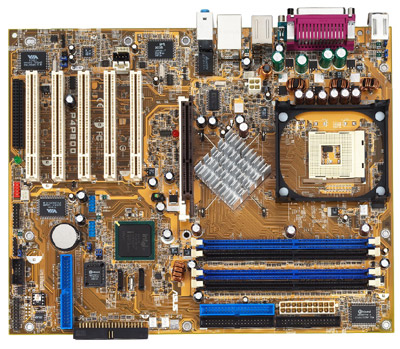
This pick continues to be a tough one, since ABIT, Gigabyte, DFI, MSI and other motherboard manufacturers offer excellent mid-range 865PE offerings. In the end, ASUS had just enough features and performance with their P4P800 Deluxe to edge out the other contenders, not to mention the fact that we've personally tested and approved this motherboard for reliability and thoroughly enjoy it. The P4P800 Deluxe is one of the best, currently available Intel motherboards that you can pair with an 800MHz FSB processor, and therefore, a 3.0C processor is perfect. The P4P800-D has an excellent balance of great features (SATA and IDE RAID, Gigabit LAN, IEEE1394 FireWire, etc.), 865PE performance, and a very good "mid-range" price at $112 shipped. Most online vendors sell this board for more like $112-$118, but as you can see, you will be able to find it for less at a few reputable online vendors. If you were so inclined to enter into more experienced user territory, the P4P800 Deluxe is also an excellent motherboard for FSB overclocking. Otherwise, we suggest that you stick to stock, and not overclocked speeds, if you are a beginning builder.
For a more in-depth look at the ASUS P4P800 Deluxe, we suggest you take a look at our Intel motherboard roundup from last year.
Listed below is part of our RealTime pricing engine, which lists the lowest prices available on the Intel CPUs and motherboards from many different reputable vendors:
If you cannot find the lowest prices on the products that we've recommended on this page, it's because we don't list some of them in our RealTime pricing engine. Until we do, we suggest that you do an independent search online at the various vendors' web sites. Just pick and choose where you want to buy your products by looking for a vendor located under the "Vendor" heading.
Memory
Recommendation: 2 X 256MB OCZ PC3200 EL (Enhanced Latency) CAS2.0Price: $114 shipped

We've talked about OCZ's troubled past and history in detail before, but thankfully, those issues have been resolved and OCZ is able to bring great memory to market, and has been doing so for over a year now. With that said, OCZ has had tremendous success with their EL series of modules for a reason: great price/performance ratio. At only slightly more than the modules that we recommended a few months before, you get lower CAS timings (CAS 2-2-3-6 1T) with OCZ EL modules instead of high CAS timings (CAS 3-3-3 4T) with the cheaper no-name modules. Lower CAS timings along with the EL series' overclocking capability translates into better performance for a great price. If you can still find the PC3500 EL modules, you can run them at DDR433. Of course, you can do that with the PC3200 EL modules as well.
We should also mention that you don't have to get a pair of 256MB modules if you think you'll be making big memory upgrades in the future. That is, you can opt for a 512MB OCZ PC3200 EL stick in order to save an additional DIMM slot for future memory expansion. And don't worry about a price hike; the cost difference between two 256MB OCZ PC3200 EL modules and a 512MB OCZ PC3200 EL module is virtually nothing.
Alternative: 2 X 512MB OCZ PC3200 EL Dual Channel Platinum
Price: $246 shipped

For our alternative pick, we've decided to recommend more memory this time around. We feel that additional memory (in this case, an extra 512MB) can be quite useful as systems get more powerful. Lower latency modules have never been a huge difference maker in comparison to additional main memory for systems that require such powerful resources. As your system ages and as you use applications that require more resources, your need for memory will go up. This is why we choose to list 1GB of memory as our alternative today. The dual channel certified capability for these modules is an added bonus if you decide to migrate to a Socket 939 platform, which is relatively easy even now. Though to be fair, you could just as easily migrate with 256MB modules.
Video
Recommendation: 128MB Sapphire Radeon 9600 Pro, DVI, TV-outPrice: $131 shipped

Ever since the release of the ATI R300 cores and their later iterations, ATI has either led or has had a clear lead over NVIDIA in terms of performance and price. The same is still true of ATI at the moment, 24 months since the release and availability of R300 core video cards. That's why, today, we highly recommend purchasing a 9600 Pro for your mid-range system, as it offers great DX8 and good DX9 performance for the price. To put it simply, the 9600 Pro is still the best bang-for-the-buck video card on the market. Sapphire makes a great 9600 Pro for just $131 or so shipped; the additions of DVI and TV-out for this price are unique, and overall, a great deal. 2D IQ quality is excellent, up to 1600x1200 desktop resolutions with the right monitor, essentially on par with retail ATI versions of the 9600 Pro. As previously mentioned, 3D performance is excellent in DX8 games and good in DX9 games, and 128MB of memory will be plenty until more intense DX9 games are released later this year and next year. If you plan on being a heavy Doom 3 gamer, however, you definitely do not want to be purchasing this card, and should instead be looking at NVIDIA's GeForce6 offerings at higher price levels. Anyway, we can also attest to the fact that 9600 Pro cards have been known to overclock extremely well, and usually come with 3.3ns Samsung memory chips.
Of course, if you're not a gamer or don't plan on playing games more than once a year, or ever, a 9600 Pro would be a pointless purchase. We would instead suggest the ATI Radeon 9200SE, 9200, 9600SE, 9550, or 9550SE, all of which can be found for under $90 shipped online (the 9200 and 9200SE for about half that). These lower end cards provide excellent 2D quality that non-gamers need, along with reliable drivers, great online ATI customer support, and up to DX9 support (in addition to excellent DX8 performance) for future Microsoft operating systems. You could always opt for the cheapest of cheap ATI cards in the Radeon 7000, but you won't be getting DX8 support, which should be the bare minimum for computer systems that plan to be used beyond the next 18-24 months, when XP64 will necessitate DX8 of some form for smooth operation.
Alternative: 128MB ATI Radeon 9800 Pro, DVI, TV-out
Price: $199 shipped

ATI's 9800 Pro has been rapidly declining in price for the last several months, and over the last two months has stabilized around the $200 mark. Even with the introduction of ATI's next generation X800 GPU, we don't see the 9800 Pro dropping more than a few more dollars in retail from where it stands now for the foreseeable future. ATI's X800 GPU and the 9800 Pro's lower price are precisely why we believe that the 9800 Pro is a perfect alternative to the 9600 Pro (or even 9700 Pro) for your mid-range system. It offers good performance for tomorrow's games and great performance for the vast majority of today's games. The 128MB memory chips at their rated 3.3ns is standard these days and should fit the needs of a mid-range user. Thankfully, 2D IQ is still superb with high end retail ATI video cards like the 9800 Pro, so non-gamers have nothing to worry about in that department.
Listed below is part of our RealTime pricing engine, which lists the lowest prices available on ATI video cards from many different reputable vendors:
If you cannot find the lowest prices on the products that we've recommended on this page, it's because we don't list some of them in our RealTime pricing engine. Until we do, we suggest that you do an independent search online at the various vendors' web sites. Just pick and choose where you want to buy your products by looking for a vendor located under the "Vendor" heading.
Monitor
Recommendation: Samsung 955DF (19") DynaFlat CRTPrice: $224 shipped
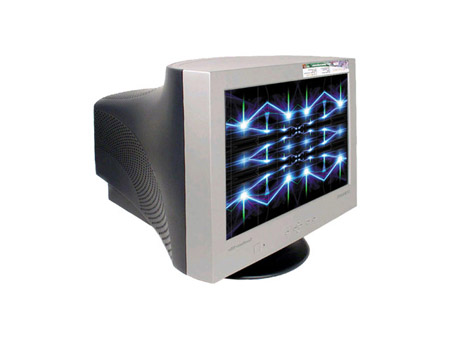
To this day, the 955DF is still one of the best bang-for-the-buck 19" monitors on the market. The .20mm dot pitch, maximum resolution of 1600x1200 @ 68Hz, and well known reliability, usability, low price and picture quality of this monitor are all reasons why we highly suggest taking a look at it. We've had extensive experience with this monitor, having done a review of it back in April 2002. To this day, we are still impressed with this monitor and can still confidently recommend it. As you may have guessed by now, CRT technology (especially in the bang-for-your-buck price range) hasn't moved much in quite some time, but that is the norm in this industry. So, don't be surprised if we continue to recommend this monitor for mid-range Buyer's Guides for some time.
Alternative: NEC Diamondtron 19" CRT (model DP930SB-BK)
Price: $359 shipped
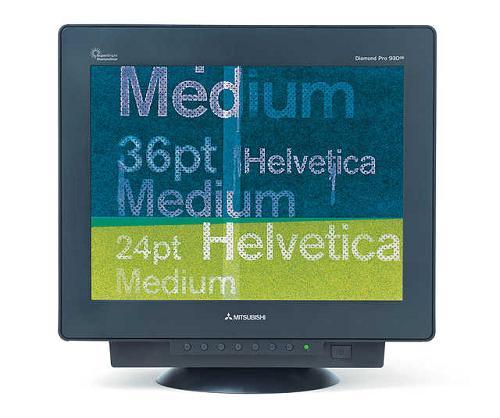
This NEC model is one of the best mid-range models of the famous Diamondtron series of monitors. Maximum resolution is 1920x1440 and dot pitch is an excellent 0.24mm. However, the clarity and refresh capability of this monitor are much better than the 955DF. So, if you're willing to dish out the cash, this is more than a capable alternative.
Computer Case
Recommendation: Antec SLK2650-BQE Mid TowerPrice: $79

Antec is one of our favorite manufacturers due to their superb track record for reliable and powerful power supply units (PSUs). They also make some excellent computer cases, though we've never felt it worthy of recommendation before until now. They certainly make a case worthy of a recommendation, especially when they include good fans for proper ventilation and relatively well organized interior space. It may or may not be aesthetically pleasing to some, though we are somewhat fond of its style (black with silver grey side panels). Probably the best feature about this case is the fact that it's designed well for users who are sensitive to noise; its steel construction and large (120MM) case fans makes it an exceptionally silent system with mid-range level hardware installed.
Sound Card
For a mid-range system, you most likely aren't going to need a lot of audio processing power unless you're an audiophile. If you are an audiophile, then you probably already have a pretty good idea of what kind of programs you run that would require the power of, say, an Audigy 2 sound card and a Gigaworks surround sound speaker system. But if you're just looking for basic sound that is of good quality (most onboard sound solutions sound identical) that will play music, games, etc., then the onboard sound on either your MSI K8N Neo Platinum motherboard or your ASUS P4P800 Deluxe motherboard will more than suffice. If you're looking for something more potent, we suggest that you peruse our High End Buyer's Guide from a few weeks ago.Speakers
Recommendation: Logitech Z640 5.1 speakersPrice: $56 shipped
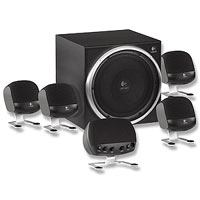
While totally unnecessary if you're not a gamer or audiophile, the Z640s are nonetheless a very popular and low cost set of high quality speakers. Whether you talk about the 45.5W satellite output/25.7W subwoofer output or the very effective magnetic shielding that protects your speakers from interference from other devices, you can't help but love these speakers. They have a great reputation for reliability and longevity in general, and our extensive personal use of these speakers only backs up that claim. If you want surround sound on the cheap, it's hard to beat the Z640. If you're a big gamer, we suggest the Audigy 2, if you can afford to spend the money. Personally, we find the immersive gaming experience of the Z640s and an Audigy 2 to be truly great, but others may not be so impressed and will opt for the cheaper variant.
Alternative: Logitech Z-5300 THX Certified 5.1 speaker
Price: $157 shipped

The Z-5300 is, more or less, the more powerful version of Logitech's successful brother, the Z-640. Besides obviously supporting 5.1 channels of sound, the Z-5300 is able to boast such features as a 100W subwoofer and a greater than 85 dB signal to noise ratio. The surround sound gaming and movie experience is tremendous, paired with a good Audigy 2 sound card. These speakers can get impressively loud and best of all, we didn't encounter any sort of crackling or distortion as volume was turned up to excruciating levels. For the price, these speakers are almost as unbeatable as the Z-640's, though not quite the bargain considering the $101 price delta in favor of the Z-640. Still, the Z-5300's are a good "power" upgrade, so to speak.
If, for whatever reason, you're not interested in high end sound and will be gaming or watching movies mostly with your headphones, obviously an expensive surround sound system will be pretty useless. If that's the case, you may just want to opt for 2.0 or 2.1 speakers, such as the ones recommended in last week's Entry Level Guide. But, if you have to choose between a good sound card and a good speaker system, we suggest that you go with the speaker system.
If you cannot find the lowest prices on the products that we've recommended on this page, it's because we don't list some of them in our RealTime pricing engine. Until we do, we suggest that you do an independent search online at the various vendors' web sites. Just pick and choose where you want to buy your products by looking for a vendor located under the "Vendor" heading.
Networking
Recommendation: Onboard networkingPrice: $0
Nothing more than onboard networking is needed for a mid-range system like the one we're building today. However, a nice additional feature that the MSI K8N Neo Platinum and ASUS P4P800 Deluxe bring (in case you want to purchase our alternative), in terms of networking, is its onboard Gigabit controller, capable of 10/100/1000 transfer speeds. The K8N Neo Platinum's use of the nForce3 250Gb allows it to perform especially well in these GbE situations. GbE isn't going to change your experience on the Internet, but Gigabit is very useful for transferring large amounts of data to and from multiple networked computers in, for example, an office or within a family of computers. Some will find the addition of Gigabit very useful for this purpose, while most will just stick to utilizing just the 10/100 capability.
Storage
Recommendation: Seagate 120GB 7200RPM (8MB cache) ATAPrice: $87 shipped

Seagate's Barracuda series is renown for their quiet operation and silent seeking (that grinding sound coming from your case). We are finally recommending Seagate drives because we've seen continued requests for emphasis on silent operation from entry level, mid-range, etc. users over the last few months, and are now convinced that there is enough demand for this type of capability.
Anyway, the additional capacity that you get with a 120GB drive over the 80GB drive, which we recommended as our first choice, can be exceedingly useful if you're someone who stores endless emails in Outlook, plays lots of games, listens to lots of MP3's, or simply needs additional space for the next 12 or more months down the road. However, 120GB is mostly excessive if you're the only person using your computer. Though, this may not be the case if you have family or friends consistently storing information on this system.
Alternative: Western Digital Raptor 36.7GB 10,000RPM SATA
Price: $117 shipped
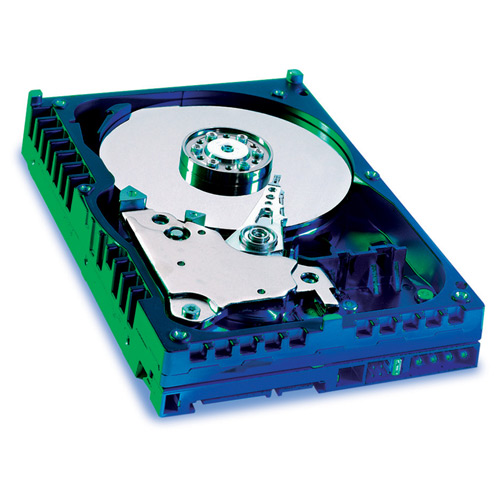
We're listing a WD Raptor as an alternative purely for speed purposes. Those looking for faster load times and a generally snappier experience will want to play with a powerful drive such as this one. Thankfully, the earlier speed flaws with the 36.7GB were fixed, and WD 36.7GB drives with identical performance to their older 74GB brothers have been shipping for some months now.
Optical Storage
Recommendation: Lite-On 52x32x52x16 Combo CD-RW/DVD-ROM drivePrice: $43 shipped
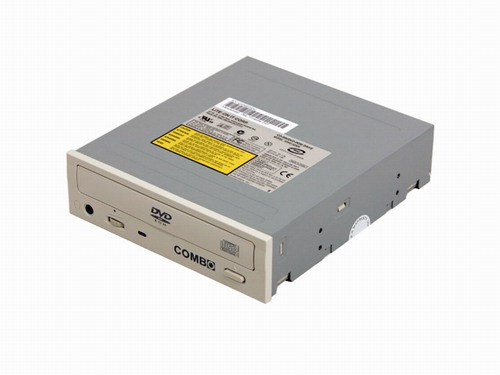
If you want to be able to watch DVDs, you can always opt for a combo drive. Its function essentially integrates CD burning and DVD watching into a single unit. The added benefit that you're getting is a better price for this type of combo versus purchasing an additional drive. However, the price difference isn't all that huge ($20 or so) if you were to buy a separate drive, and that second drive would allow you to watch DVDs while you burn CDs, which isn't possible with the combo drive. This drive also comes with the nice added bonus of Lite-On's "Smart-Burn", which essentially protects for buffer under run. In the end, the decision is up to you as to how you want to configure your optical storage.
Alternative: NuTech DDW-082 8X DVD+/-RW
Price: $62 shipped
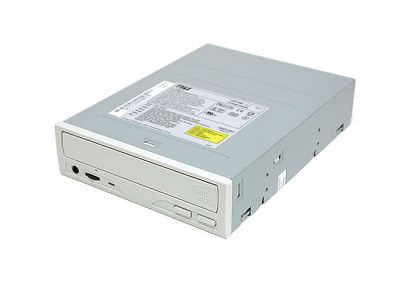
For a few months there, NEC's 2500A was a pretty hot buy for those who wanted a sort of cheap stopgap between today's 8X DVD+/-RW technology and tomorrow's 16X DVD+/-RW technology. No worries, simple, and cheap. But the DDW-082 has sort of taken over that spot, especially at the tender price of just $62. So, today, we choose NuTech's DDW-082 8X DVD burner. We did an extensive roundup of 8X DVD burners just a couple months ago, and concluded that the DDW-082 was the best burner of the bunch. We suggest that you read up on this roundup to learn more about modern day DVD burners. Here's an excerpt regarding the DDW-082:
Incredibly, this drive went from one of our worst performers to our best performer with simple firmware upgrades. Another great feature of this drive is the supported 8X write strategies on 4X media. The fact that this drive is also the cheapest drive in our roundup makes NuTech's DDW-082 a true underdog champion. The DDW-082 deserves our editor's choice award for this roundup.12X DVD-RW drives have started to hit the market in quantity within the past several weeks. However, the price and availability of 12X media is underwhelming at best, and therefore certainly not worth any recognition in our Buyer's Guides just yet.
We'd also suggest reading this article for more information on all of this technology.
Listed below is part of our RealTime pricing engine, which lists the lowest prices available on storage from many different reputable vendors:
If you cannot find the lowest prices on the products that we've recommended on this page, it's because we don't list some of them in our RealTime pricing engine. Until we do, we suggest that you do an independent search online at the various vendors' web sites. Just pick and choose where you want to buy your products by looking for a vendor located under the "Vendor" heading.
Keyboard and Mouse
While trivial, it's still important that you purchase the right keyboard and mouse. Different people have different preferences for a keyboard's feel and look, and the same goes for a mouse. Therefore, we suggest that you personally try out a keyboard and mouse. To recommend purchasing these items online is misleading, as there are too many users with different preferences for this type of thing. Visit your nearest PC outlet to try out a keyboard and mouse; a PC Club, Best Buy, CompUSA, or Circuit City store will do. We suggest that you start with Microsoft and Logitech keyboards and mice. Make sure that you also check out optical mice from both of these manufacturers as well. A good solid optical mouse from either should run about $20, but in some cases, can run as little as $10 if you can find the right deal.If you cannot find the lowest prices on the products that we've recommended on this page, it's because we don't list some of them in our RealTime pricing engine. Until we do, we suggest that you do an independent search online at the various vendors' web sites. Just pick and choose where you want to buy your products by looking for a vendor located under the "Vendor" heading.
Mid-Range System Summary
| Hardware | Component | Price |
| CPU & Cooling | AMD Athlon 64 3000+ (retail cooling included) | $169 |
| Motherboard | MSI K8N Neo Platinum (nForce3 250Gb) | $126 |
| Memory | 2 X 256MB OCZ PC3200 EL (single 512MB module optional) | $114 |
| Video Card | 128MB Sapphire Radeon 9600 Pro | $131 |
| Monitor | Samsung 955DF (19") DynaFlat CRT | $224 |
| Computer Case | Antec SLK2650-BQE Mid Tower (includes Antec 350W PSU) | $79 |
| Sound Card | Onboard sound | $0 |
| Speakers | Logitech Z640 5.1 | $56 |
| Networking | Onboard 10/100/1000 Ethernet | $0 |
| Hard Drive | Seagate 120GB Barracuda IV ATA | $87 |
| CD-RW | Lite-On 52x32x52x16 Combo Drive | $43 |
| Bottom Line | - | $1029 |
$1029 is the final price of this week's mid-range system, which does not include any money that you'll spend on software (Windows XP Home or Professional, Office, etc.) or a keyboard and mouse.
We like to think that we've put together an excellent blend of performance, price, and reliability into this week's system. We've personally put these components together and have had the immense joy of testing them to death, with great success, so we can vouch for this system's credibility. That said, you should still carefully consider our alternative picks, as it's impossible to recommend every piece of hardware that every person wants in a mid-range system.
Now, go build your system and let us know what you think in our comments section.







